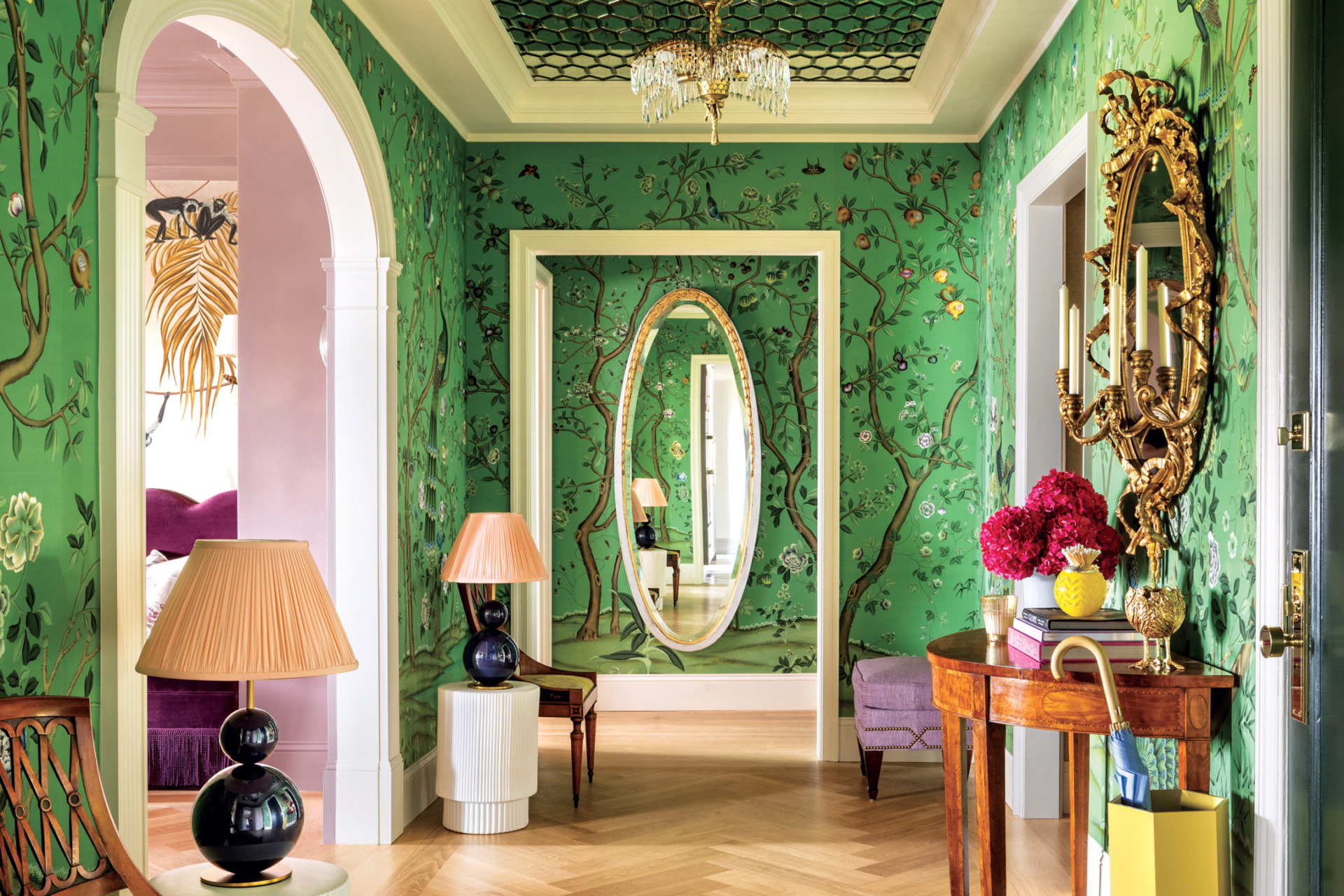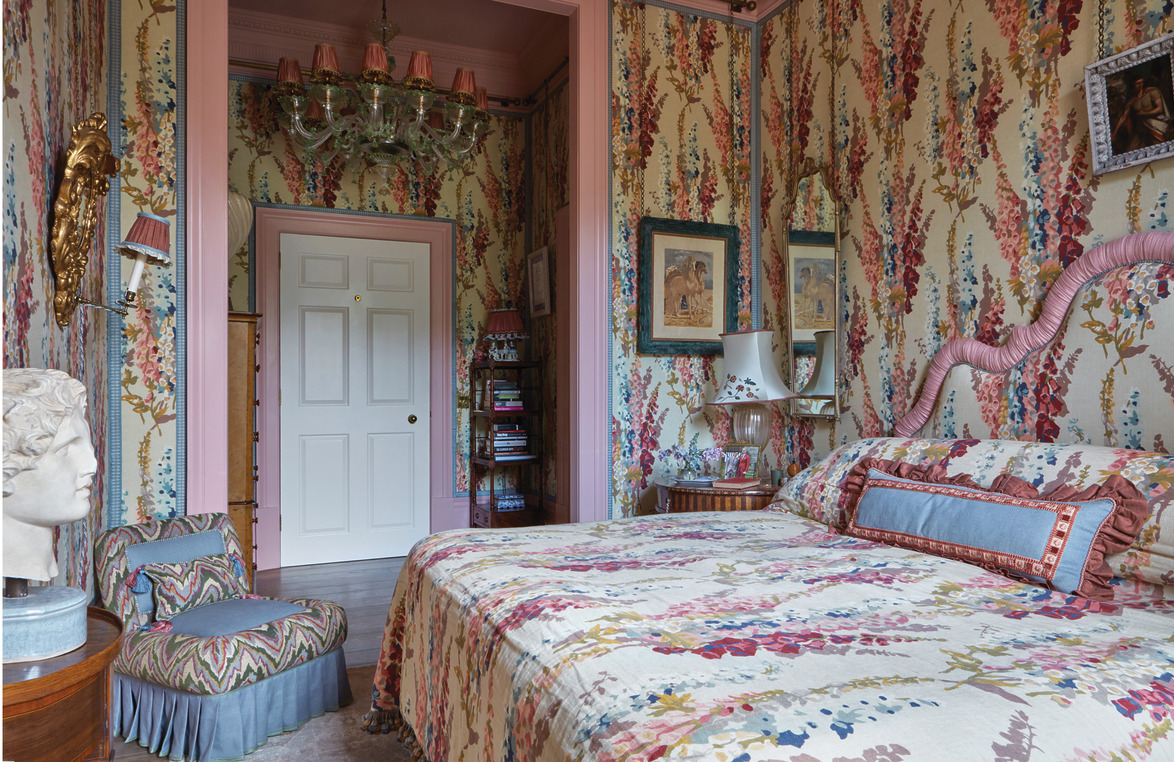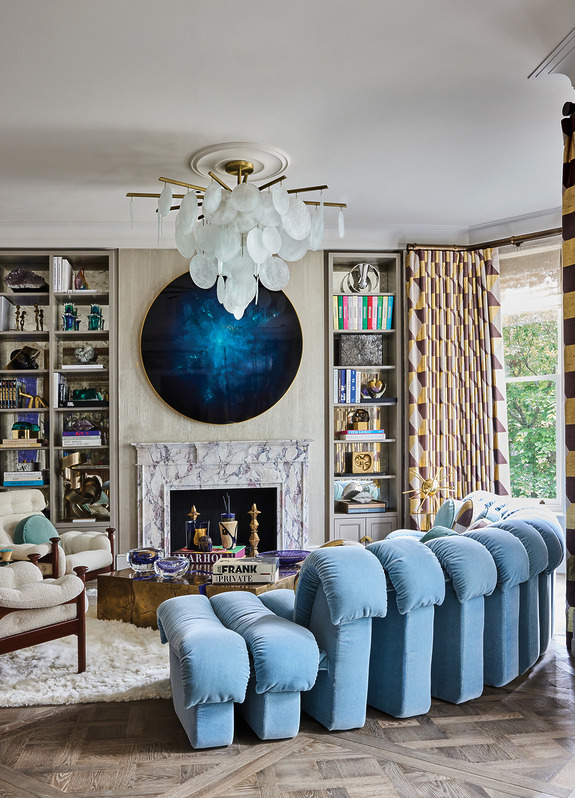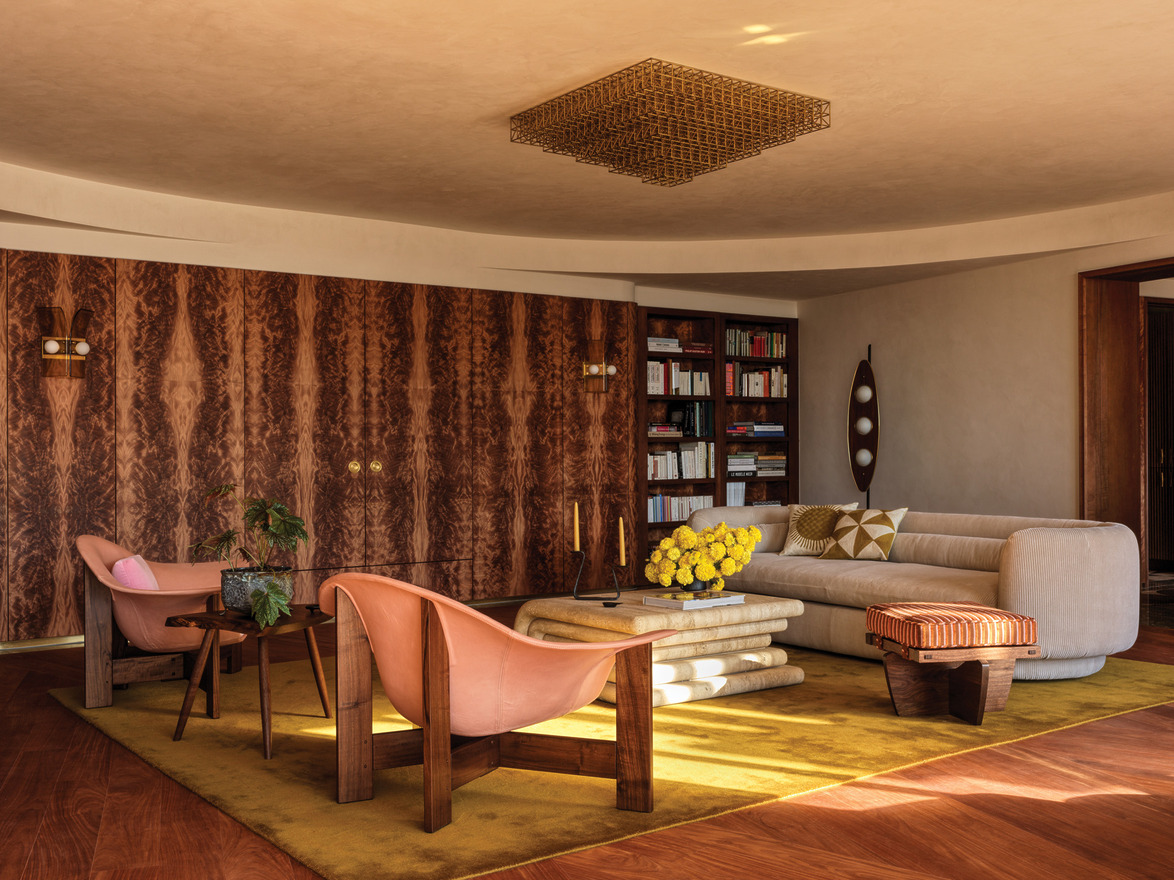Unlock the Secrets of Maximalism Interior Design
Minimalism may have ruled for decades, but maximalism interior design is here to remind us that “less is a bore.” This design style celebrates abundance. It’s about surrounding yourself with the things you love—art, patterns, antiques, color, and texture—without apology.
Insights from leading interior design experts Martin Brudnizki, Trilbey Gordon, and Nicholas Potts reveal how to layer patterns, mix textures, and create spaces that feel both personal and welcoming.

1. Tell a Story Through Patterns
Martin Brudnizki is known for his vibrant, layered interiors. While many call his work “maximalist,” he prefers the word “layered.” For him, maximalism interior design is about feeding the mind and soul.
Brudnizki believes a home should be full of details that encourage exploration. One of his favorite tricks is to cover an entire room in a single pattern. In his bedroom, for example, the walls, curtains, headboard, and bedspread all share the same foxglove print. The result is immersive and soothing, even though it’s bold.
If you want to try this in your own home, pick one pattern you truly love. Then commit to it fully. Whether it’s floral wallpaper, striped fabric, or a bold geometric pattern, let it dominate the space.

2. Let Your Collections Lead the Design
For British designer Trilbey Gordon, maximalism interior design begins with what the homeowner already owns. Personal collections often set the tone, scale, and mood of a room.
In one London townhouse, Gordon’s client inherited a striking icy de Sede sofa. Rather than working around it quietly, Gordon made it the centerpiece. She added Yves Klein–inspired blue accents, including a bold oceanic wall piece above the marble fireplace. These choices tied the room together and gave it dramatic, coastal energy.
Gordon’s advice? Don’t be afraid to experiment. Sometimes the best designs come from playing around with different pieces until you see what works.
If you’re not into busy patterns, you can still embrace maximalism interior design by using bold textures in surprising places. Think of velvet on dining chairs, raffia on a headboard, or lacquer inside a coffee table. These touches make the space feel richer and more inviting.

3. Edit Without Losing Impact
Maximalism doesn’t have to mean visual overload. Architect Nicholas Potts proves that you can create “wow” moments while keeping things refined.
For a Watergate apartment in Washington, D.C., Potts aimed to incorporate the drama of maximalism interior design without clutter. He used curved Okoume veneer paneling for the walls, adding warmth and texture. The room’s furnishings were sleek and sinuous, balancing the richness of the wood with open space.
In the living room, a sculptural travertine cocktail table stands out against earthy tones and mustard yellow accents. A beige sofa becomes a statement piece when set against deep navy walls. This is where restraint works in your favor: the bold elements shine because nothing competes with them.

How to Make Maximalism Work for You
Maximalism interior design is not about cramming every surface with decoration. It’s about choosing elements that matter to you and using them with confidence. Here are a few principles to keep in mind:
- Start with what you love. Whether it’s a vintage rug, a family heirloom, or a favorite color, use it as the foundation. Build the rest of the room around it.
- Mix, don’t match. Combine different textures, styles, and eras. Pair a modern sofa with an antique coffee table—layer velvet cushions over a patterned throw.
- Think in layers. Begin with larger elements like wall color or rugs. Then add furniture, art, and smaller accessories. This creates depth and complexity.
- Balance busy with calm. If you’re using a bold wallpaper, choose simpler curtains or flooring. Let your eye rest in some areas.
- Tell your story. Maximalism is deeply personal. Include objects that reflect your history, travels, and interests.
The New Rules of Maximalism
While maximalism interior design celebrates individuality, today’s interpretations tend to be more thoughtful than in decades past. Designers edit their choices to avoid clutter, using boldness strategically.
The beauty of this style is its flexibility. You can dial it up or down to suit your personality and lifestyle. And unlike minimalism, there’s no strict rulebook. Your home can be as colorful, eclectic, or layered as you want.
Why Maximalism Resonates Today
In an age where so much feels digital and impersonal, maximalism interior design brings warmth and connection. It’s about creating spaces that are unique to you—places that feel alive.
Feeling inspired to bring maximalism interior design into your own home? Whether you’re ready to mix patterns, play with textures, or add bold statement pieces, start your journey today by exploring our curated collection of maximalist products at HOMMÉS Studio.

Source: GALERIE















